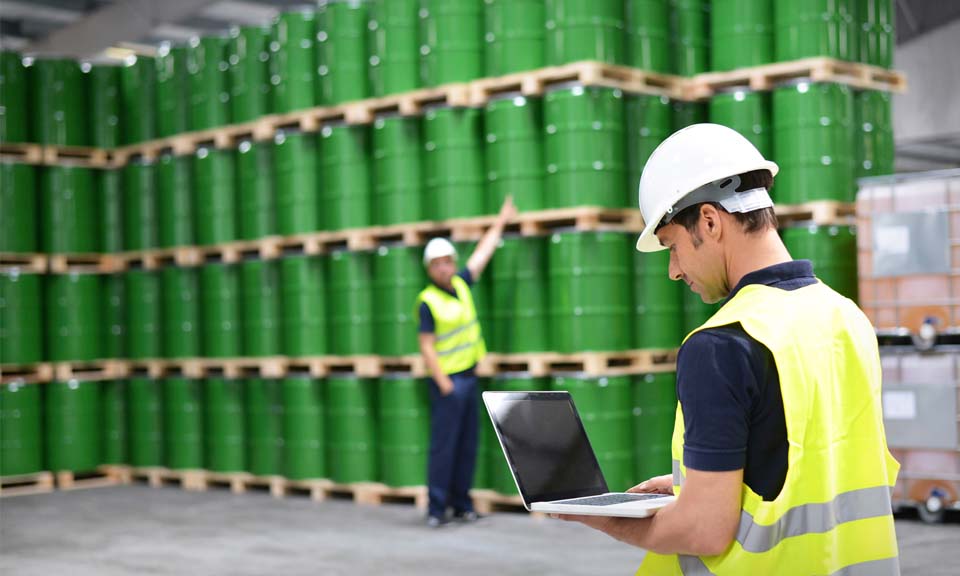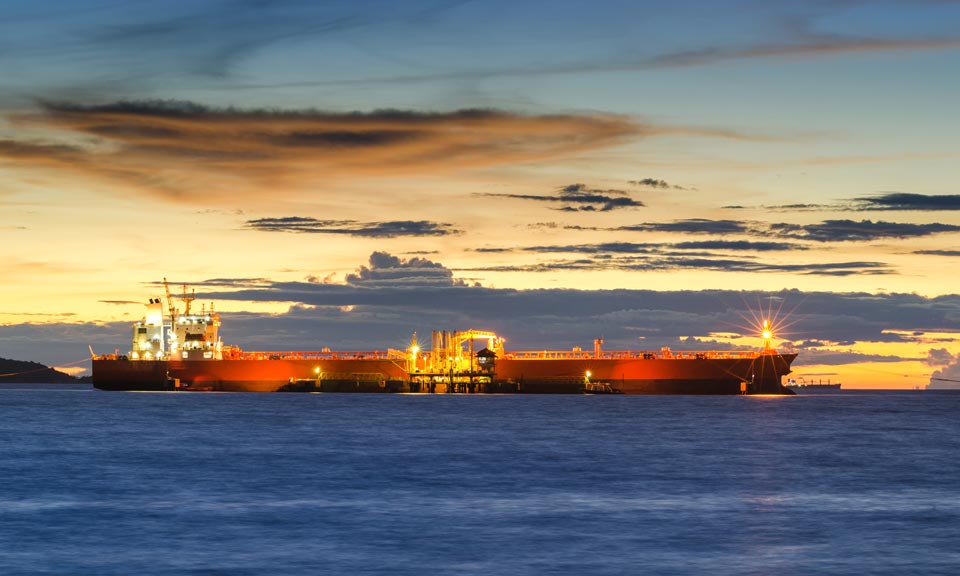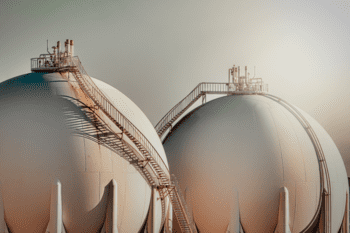Commodities 2024: Global crude supplies seen giving Biden wiggle room on oil sanctions

Global risk factors could shift administration's focus
Increased US oil production has boosted global supplies, which has reduced -- but not eliminated -- the risk from tighter sanctions, said Rachel Ziemba, an adjunct fellow at the Center for a New American Security. "If easy oil conditions persist, in line with sluggish growth, I do think they may make it easier to continue with enforcement," she said.
Oil prices have come down quite a bit and most analysts seem to be concerned with further macro risks, so Washington can risk some sanctions-related disruptions without worrying too much about a price spike, said Fernando Ferreira, director of geopolitical risk service at Rapidan Energy Group. "Current market conditions give the administration more wiggle room to act," Ferreira said.
NYMEX WTI crude prices are ending 2023 down around 5% from year-ago levels as markets eye a global supply overhang in early 2024. Non-OPEC supply growth is set to outpace slowing global demand growth next year, S&P Global Commodity Insights data shows. Even with OPEC+ extending voluntary production cuts into the new year, data shows there still be an implied liquids surplus of 2.2 million b/d in the first quarter.
Global inventories have climbed in the final months of 2023 and builds are expected to accelerate in early 2024, peaking around May with the addition of around 150 million barrels before draws resume, S&P Global data shows.
This budding supply overhang has contributed to the formation of a deep contango structure in crude forward curves. The sixth-month NYMEX WTI contract premium to the front-month widened to around $1.20/b in mid-December, an S&P Global analysis showed, marking the widest contango in that part of the curve since November 2020.
For global oil supplies, other factors like regional conflicts, OPEC+ decisions, the scale of US and Chinese demand, and disruptions of major shipping routes are expected to be more important than sanctions decisions.
While some experts still see leeway for Washington on sanctions, others say risks from these factors will indeed limit the administration's options.
Disruptions in the world's major waterways are affecting shipping prices and insurance prices and have built in a new premium in oil and LNG prices, said Brenda Shaffer, an energy expert at the US Naval Postgraduate School.
Addressing waterway security more directly could add jitters to the global oil price, Shaffer said.
"With this in the background and in an election year, it is not likely that the Biden administration will enforce sanctions and undertake policies that will take oil barrels off the market," she said.
S&P Global Commodities at Sea data shows around 8.25 million b/d of crude and refined products flowed through the Suez Canal from January through November 2023. Of that total, 4.72 million b/d were southbound, including of 2.7 million b/d of crude, and 3.531 million b/d of flows were northbound, including 1.275 million b/d of crude.
Washington's immediate oil sanctions focus is on Russia, said Ferreira. "We expect a significant ramp-up in sanctions enforcement next year," he said.
More enforcement will increase the costs and risks associated with the shadow fleet and funnel more exports through price cap-compliant services, he said.
Ziemba expects enforcement of the price cap to be more targeted, with some additional tankers listed and perhaps some spot checks. Insulating the global economy from shocks will argue against more extensive enforcement, she said.
The US may see lower crude prices as a tailwind for a tighter squeeze on the Russian shadow fleet, according to a Dec. 20 note from Clearview Energy Partners.
"Once Urals moved below the $60/b threshold, cap-compliant trade could offer an outlet for barrels that might otherwise have moved via shadow fleet capacity and Russian middlemen," Clearview said.
Platts assessed FOB Urals Primorsk below $60/b from Dec. 6 to Dec. 12, according to S&P Global Commodity Insights data.
Most experts expect little change in the US enforcement of Iranian oil sanctions.
"I don't think Biden will enforce the sanctions on Iran any more strictly than he has now, unless there is some sort of escalation in the Gaza/Israel conflict in which getting tougher on Iran might make a difference," said Ellen Wald, president of Transversal Consulting.
Ferreira was also skeptical that anything would change. "No one seriously believes this administration is willing to take the type of enforcement actions against Chinese traders, shippers and buyers that would crimp Chinese imports of Iranian oil," he said.
Iran's ties to the Houthis are also complicating matters, said Shaffer.
"Iran knows that it has the Biden administration over a barrel in an election year and is using its proxy – the Houthis – against international shipping in the Red Sea, and its proxies in Syria and Iraq against US forces there, with no fear of American response," she said.
In Venezuela, where the US eased oil and mining sanctions for six months in exchange for progress toward fair elections in 2024, the Biden administration will likely defer to the Venezuelan opposition's assessment of whether Venezuelan President Nicolas Maduro is delivering on his promises, Ferreira said.
"Neither the Biden administration nor the opposition want to undermine the process by prematurely reimposing sanctions, so any changes before April will be symbolic, if they happen at all," Ferreira said. "I suspect we'll roll over the licenses again in April and wait until after the Venezuelan elections to make any adjustments."
The US will likely be flexible in negotiations and wary of reimposing sanctions that could undermine humanitarian issues, Ziemba said. The sanctions pause will likely remain in effect at least until the six months expire, but some areas of sanctions may be reinstated, including potentially those on the gold trade, she said.

News
India’s role in global oil markets is set to expand at a fast pace by the end of the decade, making it the biggest hub for demand growth. Battling high prices, oil diplomacy with countries such as the US and Russia, as well as revival of flagging upstream production will be some of the key priorities for the new government. Related feature: INDIA ELECTIONS: Refining capacity, crude output, storage to top new government's oil agenda Click here for full-size infographic

News
(Latest update: May 10, 2024) Related content: Russian crude exports by non-G7 tankers hit new high in April since price cap Russia, one of the world’s largest oil suppliers, has increasingly turned to non-Western firms to transport its crude to overseas buyers during its ongoing war with Ukraine . With a dual goal of undermining Russia’s war chest without creating significant disruptions to global supplies amid inflation pressure, G7 countries and their allies have banned tanker operators, insurers and other services firms from facilitating seaborne Russian crude exports unless the barrels are sold for no more than $60/b. The price cap regime, which came into force Dec. 5, 2022, does not directly cover tankers flagged, owned and operated by companies outside the G7, the EU, Australia, Switzerland and Norway, and not insured by Western protection and indemnity clubs. While such ships tend to be older and less maintained, their share in Russia’s crude exports market has been rising in recent months amid strengthening prices of Urals -- the OPEC+ member’s flagship crude grade -- and tightening sanctions enforcement by the West. Non-price-capped tankers have a larger market share in shipping Russia’s Pacific crude exports, according to analysis of S&P Global Commodities at Sea and Maritime Intelligence Risk Suite data. Crudes such as Sokol, Sakhalin Blend, and Eastern Siberia–Pacific Ocean grades are more often involved in these trades than Russian barrels from Baltic or Black Sea ports like Urals. Tanker operators in Greece, Europe’s top shipowning nation, managed to keep their traditionally strong market position in Russia in the first few months since the price cap took effect before giving ways to their peers in the UAE, Russia, China and Hong Kong. Related content: Interactive: Global oil flow tracker

News
(Latest update May 3, 2024) Recording changes to Russian oil exports and EU oil imports since the war in Ukraine Russia’s war in Ukraine has triggered a major upheaval in the global oil markets, forcing Moscow to find alternative buyers and Europe to source new supplies as Western sanctions seek to clamp down on Moscow’s vital oil revenues. With an EU embargo and the G7 price cap on Moscow's oil now fully in place, Russian seaborne crude exports have remained largely resilient as displaced volumes of its discounted oil flow East. Russian oil product exports have also mostly held up with new buyers in Africa absorbing Russian diesel and other fuels now banned from Europe. Related stories: Russian oil product exports slump to post-pandemic low as drone hits resume (subscriber content)

News
Global oil producers are increasingly touting efforts to reduce the carbon intensity of their upstream operations to stand out as investment dollars shrink during the energy transition. Some producers see carbon intensity rankings as a measure of which fields will have staying power, while environmental groups say the efforts ignore the much larger global warming emissions created downstream when the oil is refined for transportation, shipping and petrochemicals. S&P Global Commodity Insights Analytics has expanded its carbon intensity calculations to 162 fields and 41 grades. The greenhouse gas emissions represent current operations from the wellhead to storage/export terminal. The newest expansion of fields and grades covers Central, South, and North America. South and Central American grades are shown in the infographic below.